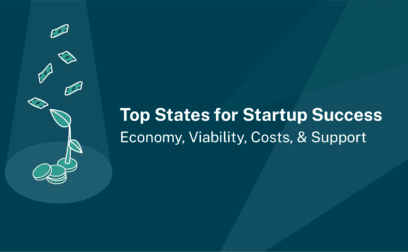TABLE OF CONTENTS
Page written by Michael David. Last reviewed on October 9, 2024. Next review due October 1, 2026.

The Employee Retention Credit can be worth up to $7,000 per employee per quarter to your small business. Here’s a look at who’s eligible and how to apply.
Here’s a general overview of the ERC application process:
It is recommended to retain the documentation related to the ERC claim in case there is an IRS audit or inquiry in the future. You may also wish to consult with a tax professional who can provide guidance on eligibility, calculations, and the application process.
To take advantage of the ERC, it is critical that you meet the qualifying criteria. To qualify for the ERC, you must meet one of the following criteria:
According to the IRS website, some taxpayers and organizations are not eligible to claim the Employee Retention Credit, including:
As of 2023, in most cases, ERC eligibility for wages paid after September 30, 2021 has expired. However, businesses can still file for a retroactive ERC refund using Form 941-X. This form can be used to adjust employment taxes filed within three years of the original return or two years from the date the employer paid the tax. This retroactive refund is only available for the 2020 tax year as well as the first three quarters of the 2021 tax year.
The only way to claim the ERC was on a federal employment tax return using Form 941 while the program was active, or Form 941-X now that the program is no longer active. While it is wise to seek the assistance of a qualified tax professional, be cautious when it comes to advertisements claiming that they can help you apply for the ERC, as any incorrect claims will need to be repaid with penalties and interest.
The most important consideration for your ERC application is to make sure that your business qualifies. You must meet at least one of the following two criteria:
If one or both of these conditions is met, then you have the opportunity to document the amount of qualified wages that were paid to employees during the application periods and apply for a refund of applicable payroll taxes.
The ERC is a refundable payroll tax credit that is available to employers who retain their W2 employees by keeping them on the payroll. If you are eligible, you may receive a credit of up to 70% of each employee’s qualified wages for 2021 and up to 50% of each employee’s qualified wages, up to $5,000 for 2020.
The ERC is designed to refund payroll taxes related to what are called “qualifying wages.” These are the full or part time wages paid to W-2 employees (excluding family members or owners) during the 2020/21 period.
If an employer qualifies for the ERC based on a significant decrease in revenue during 2020/21, then the qualifying wages from that period can be part of the ERC claim, even if the business continued its operations.
If an employer qualifies for the ERC due to a government-mandated suspension of operations, all wages paid during the suspension period are generally considered qualifying wages.
The government orders leading to the suspension must be issued at the federal, state, or local level. These orders might include closures, stay-at-home orders, restrictions on business operations, or other measures that directly impact the ability of a business to continue its normal operations.
If you are looking for sources of funding for your small business, look no further. Swoop will scan the market for the best business financing options and deliver them to you in minutes, including ERC advances and guidance. Check your financing options now.
Michael David is a financial writer and former investment advisor. Writing for Capital Group, Dimensional Fund Advisors, Franklin Templeton Investments, HSBC, Invesco, PIMCO, Vanguard, global insurance companies, major banks and others, he has educated professionals, business owners and consumers about strategies for investing, insurance, banking and corporate finance for more than 20 years.
Swoop promise
At Swoop we want to make it easy for SMEs to understand the sometimes overwhelming world of business finance and insurance. Our goal is simple – to distill complex topics, unravel jargon, offer transparent and impartial information, and empower businesses to make smart financial decisions with confidence.
Find out more about Swoop’s editorial principles by reading our editorial policy.
Create your free Swoop account to easily apply for a employee retention credit application
Get your free ERC application quote today
Join the 95,000+ businesses just like yours getting the Swoop newsletter.
Free. No spam. Opt out whenever you like.
Kingfisher Way, Silverlink Business Park, Newcastle upon Tyne, NE28 9NX, UK
View in Google Maps35 Bull Street, Lewis Building, Birmingham B4 6AF, UK
View in Google MapsAberystwyth Innovation and Enterprise Campus
Gogerddan Campus
Aberystwyth University
Ceredigion
SY23 3EE
Dogpatch Labs, The CHQ Building, Custom House Quay, Dublin, Ireland
View in Google MapsSuite 801, Level 8, 84 Pitt Street, Sydney, NSW 2000, Australia
View in Google Maps43 W 23rd St, New York, NY 10010, United States
View in Google Maps21 Dreyer Street, Cape Town, South Africa, 7708
View in Google Maps



